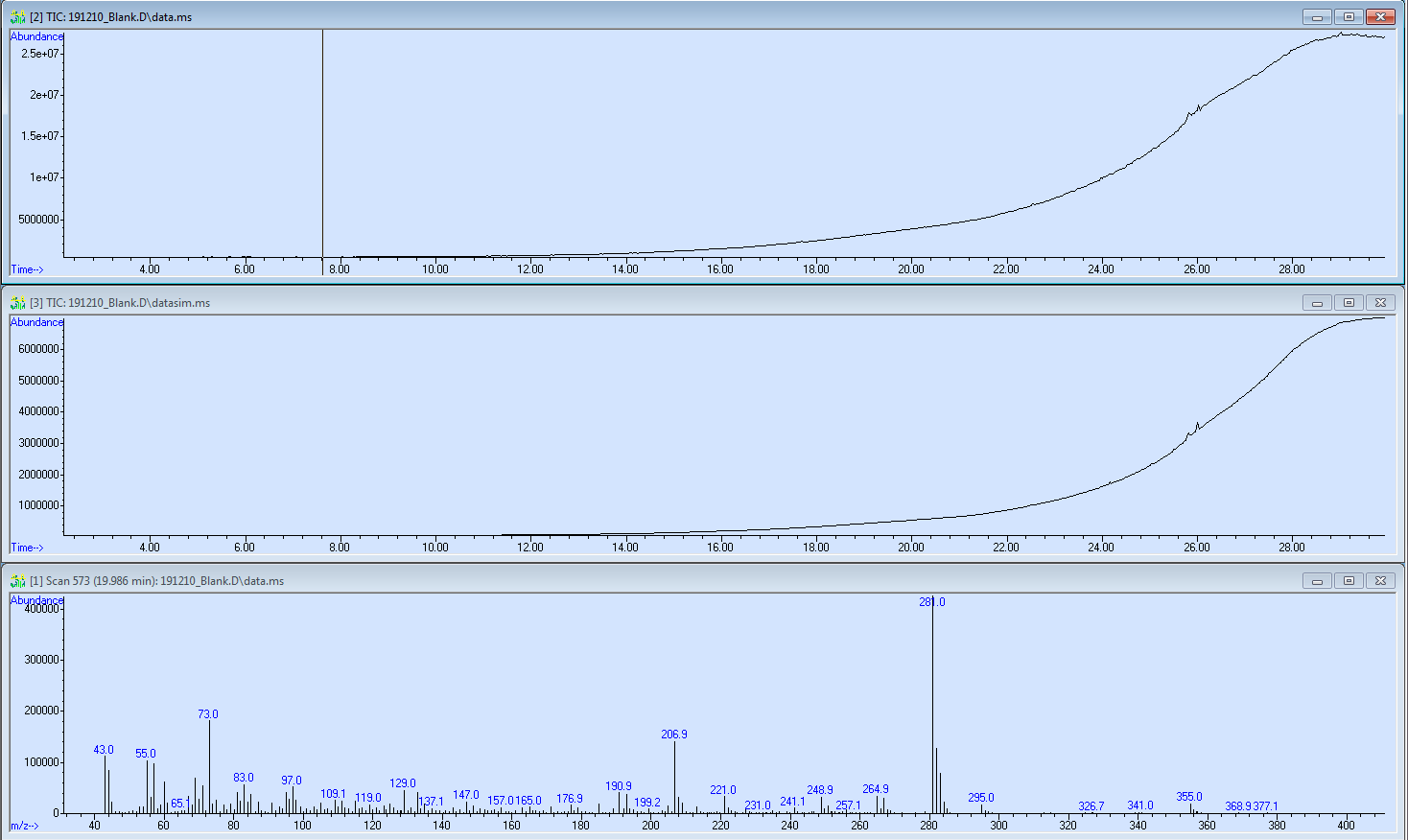Hello,
We are working on an Agilent model 7890A GC with a 5975 series MS. We are doing an analysis with a
J&W DB-35ms Ultra Inert, mid-polarity 30m, 0.25 mm ID, 0.25 um film thickness, fused silica column. We installed and conditioned the column, and have run a series of nine blanks. Our baseline shows either a radical upward drift, or perhaps column bleed, or perhaps something else, but in any case seems very unstable. Here is a picture of the SCAN and SIM TIC, with the ion intensities at almost 28 min. The photo can be seen better if selected and opened in a new browser tab:
This is the the full cylce, with ion intensities at 20 min. In our program we cycle we ramp up from 200- to 300C from 20-30 min, and this coincides with the baseline climbing:
Although we haven't started running samples, and don't know if we can detect anything, I think the baseline should be flat and stable, not climbing so radically and at such high abundance. Our inlet is new, we have an O2 scrubber on the carrier gas, and the group running samples after us hasn't had any problems after they swapped our column for another that they use for a different type of analysis. Can anybody offer any insights here? Is this symptomatic of column bleed, though this column is supposed to be very low bleed? The ions identified coincide with PDMS, but I don't know if a fused silica column also bleeds these ions. The column was perhaps not purged correctly, as it was connected to both the inlet and detector with He flow overnight, before being conditioned for 3 hours at 300C the following day. Is this possible? I've read that the column should be purged with carrier gas flow while not connected to the detector. Can the column be reconditioned?
Thank you for your advice and input!
Jason


